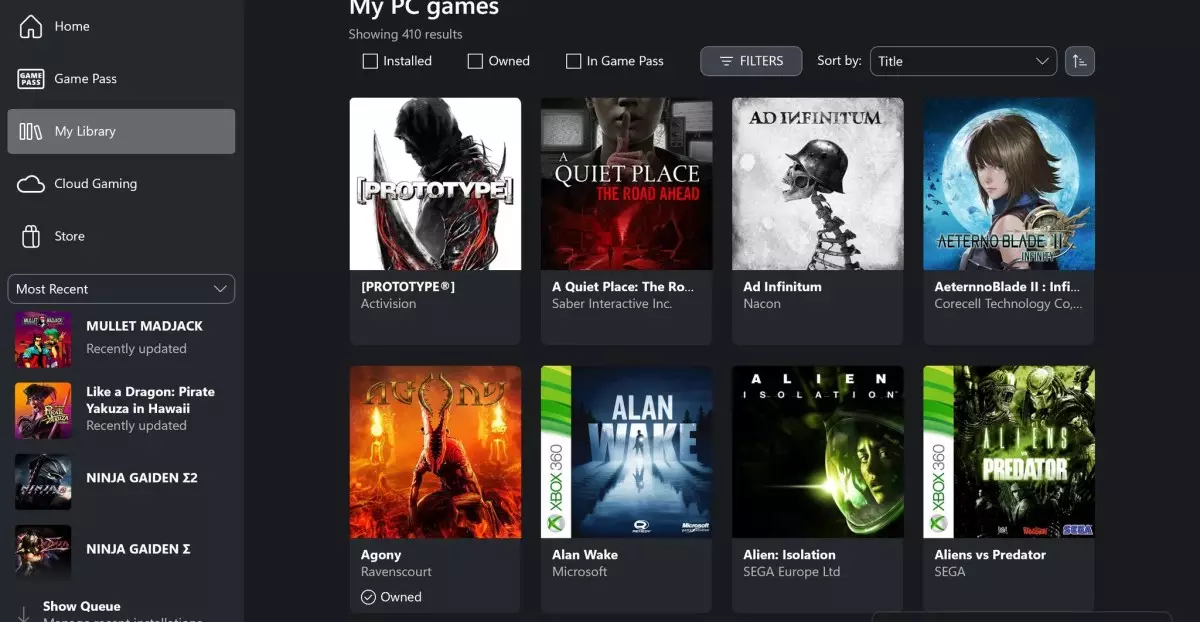Microsoft is on the brink of a revolutionary change in how we perceive and interact with gaming across its platforms. For years, the distinctions between console and PC gaming have created a divide that has left gamers questioning the potential for cross-platform synergy. Recent developments indicate that Microsoft is making intentional strides to bridge the gap between its Xbox console library and Windows PC gaming. The incremental updates to the Xbox app on Windows are not merely cosmetic—these shifts suggest a deeper, strategic integration of both ecosystems.
Tom Warren, a veteran tech journalist and senior editor, first highlighted this trend, noting peculiarities within the Xbox PC app. For instance, users have begun noticing Xbox console games appearing within their library, even if those titles cannot be installed on PC. This phenomenon is more than a perplexing glitch in the app; it signifies a foundational change in Microsoft’s approach to gaming. The idea of a unified gaming library—spanning both Xbox and PC—is emerging, leading to speculation on how Microsoft will manage such a vast collection of games.
A Unified Gaming Library: The Vision and Strategy
The ambition to create a single, comprehensive gaming library resonates throughout Microsoft’s plans. In an era where cross-platform play is gaining momentum, the integration of Xbox and Windows is not just an afterthought but rather a vital component of Microsoft’s long-term strategy. The concept of “Project Kennan,” a collaboration with Asus on a handheld gaming device, underscores this movement toward unity. This innovative handheld might marry the best of both worlds—the immersive experience of Xbox gaming with the versatile accessibility of Windows.
Moreover, the planned enhancements to the Xbox app hint at Microsoft’s larger goal of inclusivity in gaming. Speculation about Steam and Epic Games Store titles becoming visible in the Xbox PC app illustrates a willingness to embrace competition, further breaking down barriers in the gaming community. This integration is critical, especially as players increasingly demand flexibility and accessibility across different formats and devices.
The Branding Shift: A New Era for Xbox PC
The recent rebranding of the Xbox PC app to “Xbox PC” is emblematic of an exciting new chapter. This shift represents much more than a name change; it’s a declaration that Microsoft is serious about establishing the Xbox PC app as the definitive hub for computer gaming. As we witness clearer branding in announcements regarding games like *Gears of War: Reloaded*, it signals to the gaming community that Microsoft is not just reimagining its platforms but is prepared to support them with a compelling vision.
The introduction of logos associated with Xbox PC strengthens the message that these platforms are set to coexist harmoniously, potentially creating a seamless gaming experience. By deploying cohesive branding, Microsoft aims not only to attract gamers but to foster a sense of belonging within its ecosystem. The excitement surrounding this initiative can have profound implications for the gaming landscape, challenging other platforms to evolve or risk obsolescence.
Confronting Competition: Tackling SteamOS and Beyond
As Microsoft pursues this ambition, it is essential to recognize the challenges that lie ahead. The presence of SteamOS in the gaming sector has prompted a significant response from Microsoft. The rise of handheld gaming devices powered by SteamOS, particularly from competitors like Lenovo, indicates that Microsoft cannot afford to be complacent. In this landscape, innovation and user-centric strategies will be key in capturing and retaining gamer allegiance, especially among those looking for handheld solutions.
It remains to be seen how effectively Microsoft can integrate Xbox console games within the Xbox PC app while also ensuring that gamers have an enjoyable experience. Questions linger regarding the feasibility of cloud gaming and emulation technology to facilitate the seamless playing of older Xbox titles on PC. However, these technological hurdles present an opportunity rather than an obstacle, encouraging Microsoft to push the envelope toward a more innovative future.
Each of these initiatives demonstrates Microsoft’s commitment to enhancing the gaming experience, solidifying its position in an increasingly competitive market, and responding proactively to consumer demands. The merging of Xbox and Windows under a unified framework could set a new standard for gaming—one that thrives on interoperability, community engagement, and the collective pursuit of an enriched gaming experience.

